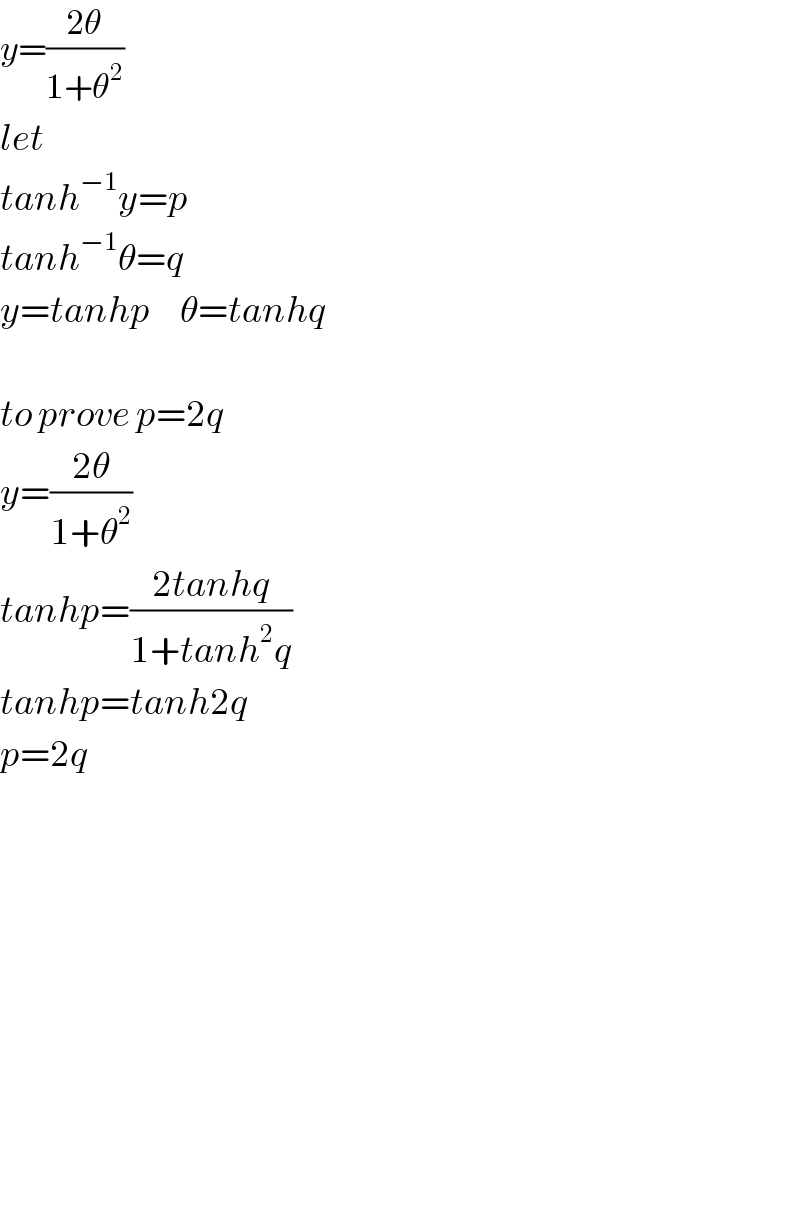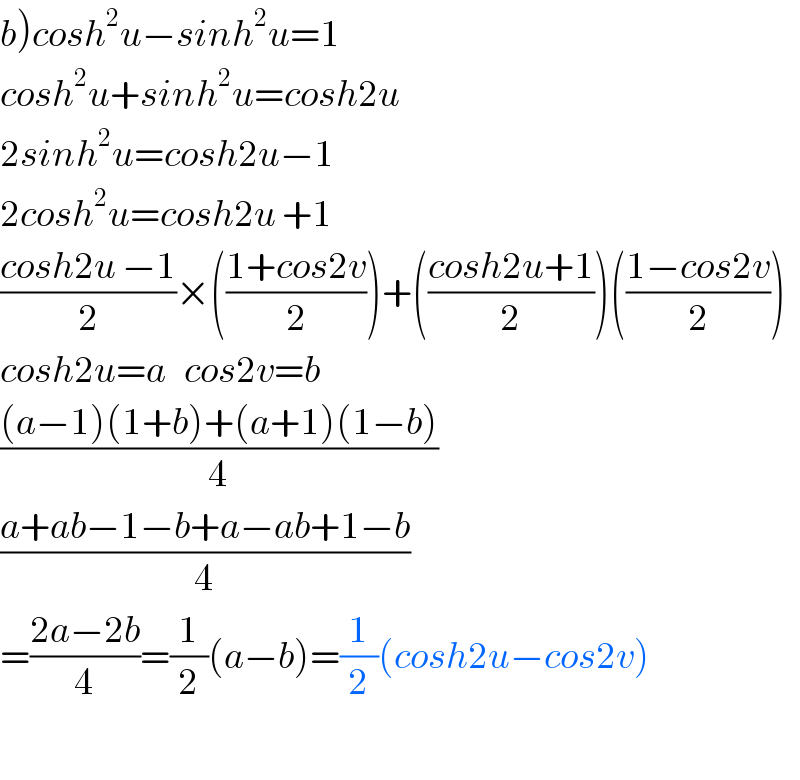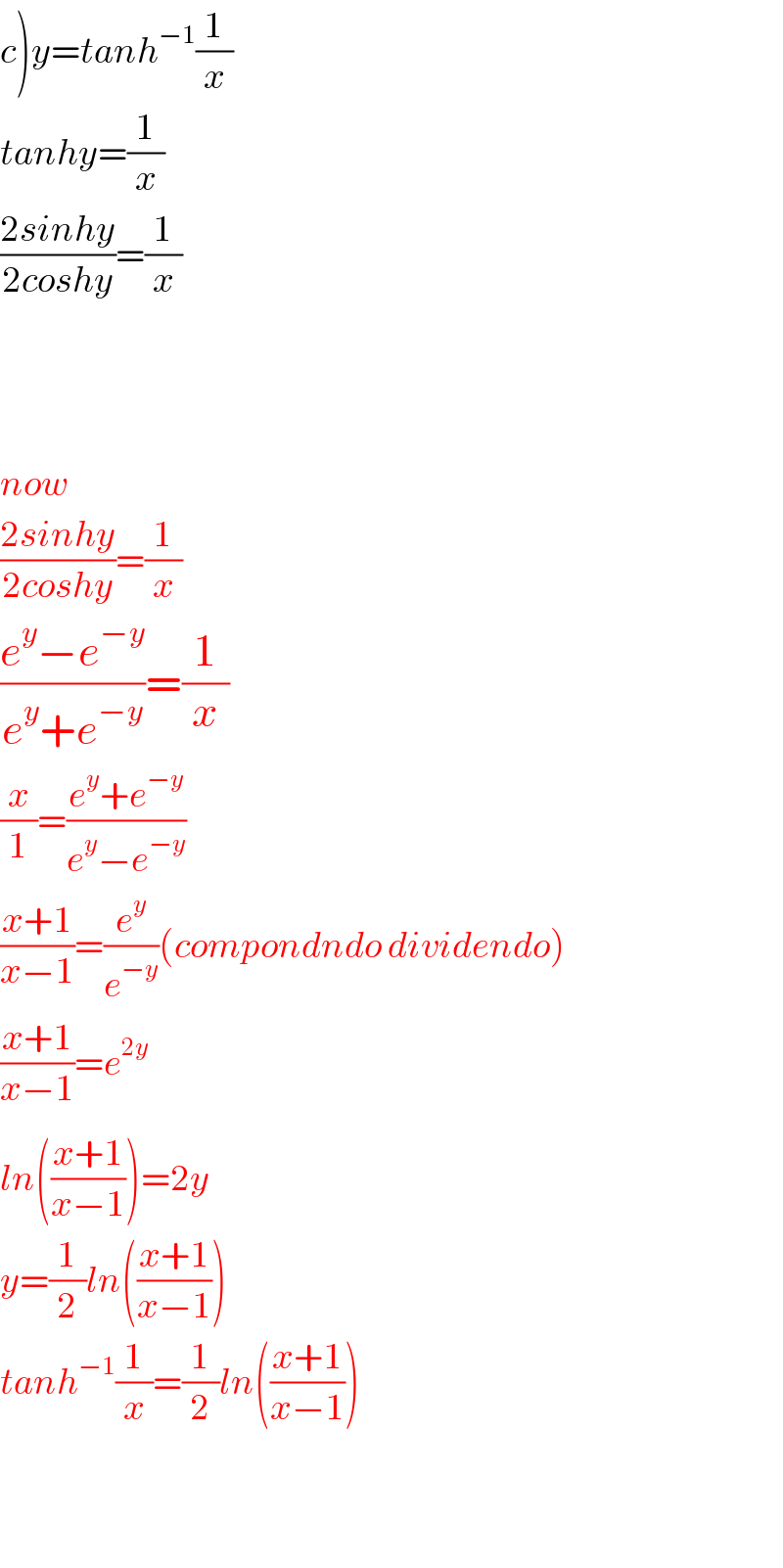
Question and Answers Forum
Question Number 44097 by peter frank last updated on 21/Sep/18

Answered by tanmay.chaudhury50@gmail.com last updated on 22/Sep/18

Answered by tanmay.chaudhury50@gmail.com last updated on 22/Sep/18

Answered by tanmay.chaudhury50@gmail.com last updated on 22/Sep/18

